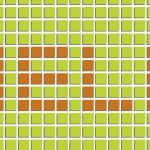What thinking techniques are best for your challenge?
There are many thinking techniques to help you generate the most creative ideas. But how do you choose the right technique for your challenge?
If you’ve been reading our articles for a while, you know that there are many different thinking techniques. The abundance of techniques is wonderful of course… but how do you know what technique to choose for your particular challenge?
Most thinking techniques are applicable in any situation. But some are more appropriate for certain types of challenges. Some techniques are great for solving problems, other techniques are more suitable for optimising an existing product (or service) and there are even techniques that are particularly useful when you want to create something out of nothing (even if you have no clue what you are looking for).
Each type of challenge has its own range of appropriate techniques. Here are the different types of challenges you can encounter and some particularly handy techniques to get you started:
Problem solving
If you are faced with a tricky problem and are in desperate need for a solution, one particularly useful technique is ‘Make it worse’. Most people find it easy to make their problem even worse. It’s a refreshing exercise and a great way to lighten the mood. More importantly, making your problem worse often leads you to insights that help you solve it!
Optimising
Creative thinkers know there is always a better idea. Anything, no matter how brilliant, can be improved. If you want to improve an existing product, system or service, you should definitely try out ‘SCAMPER’. SCAMPER is a simple technique consisting of 7 different ways to look at the product, service or system you’re trying to improve.
Opportunity seeking
Even if you have no problem to solve, or even anything to improve, it can be useful to generate ideas. Imagine for instance you are an entrepreneur looking for new business opportunities. A good way to start is by looking at an existing product or service. ‘Escape’ can be an extremely useful technique if you want to revolutionise a certain market. Break free from the most basic assumptions you have about a certain product or service and see if you can break the rules.
While you could seek opportunities by looking at an existing market, you might just as well start from scratch. Perhaps you will stumble upon something so revolutionary, that nobody has thought of anything remotely like it! Generating interesting ideas out of thin air is surprisingly easy. You can use a variant of the Random Input technique to supercharge your brain. All you need to do is generate two random words and force a connection. For instance, what new products can you imagine when you combine a towel with a helicopter? Or a fork with a pencil? Making illogical combinations could lead you to inventions that you would otherwise never have considered.
Of course these are just some of the many possible thinking techniques. The best way to approach any challenge is to try out different techniques. That way you can figure out what techniques are best suited for your particular challenge. And, perhaps more importantly, you can figure out what techniques work best for you. Different types of people prefer different kinds of techniques. For instance, in our sessions we generally find that students are very good at embracing the bizarre. They usually have very little trouble with provocations and are more than willing to come up with the wildest ideas. At the same time top executives are more at ease with abstract thinking, civil servants love to ‘make things worse’ and entrepreneurs generally like challenging assumptions. Of course these observations are a bit oversimplified. The point is: what works for one person might not be right for the next.
Grant yourself some time to try out several techniques and find out what gives you the best results. Don’t keep on using the same technique once you’ve found your favourite though! Try something new once in a while to keep your mind fresh.
Naturally I would love to hear your experiences with different thinking techniques. Please let me know in the comment box below which techniques work best for you and why…
Like this article?
If you enjoyed reading this article, feel free to share it with your network by hitting one of the buttons below. This way other people can benefit from the article as well.





